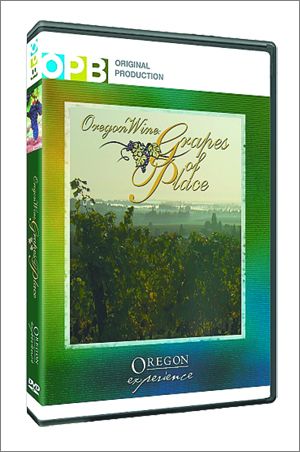Fine Vine Viewing

By Karl Klooster
The story of how wine’s new wave washed onto Oregon shores more than 40 years ago has been told in bits and pieces over time. A handful of books by industry pioneers as well as numerous newspaper and magazine articles collectively trace its history.
But no single source has compellingly told the tale from its literal roots to the present day. Until now.
May 8, at 8 p.m., Oregon Public Broadcasting debuted a praiseworthy hour-long production that succeeded admirably in doing just that.
Stemming from an idea that dates to 2008, the Oregon Experience segment is called “Oregon Wine: Grapes of Place.” More than a year in the making, executive producer Nadine Jelsing was the prime mover behind its concept and creation.
“We only do five shows a year,” said Jelsing, who has produced Oregon Experience since it premiered on OPB in 2006. “We’re very selective about the subjects we choose. They have ranged from pioneer times to the present day.”
Telling the Oregon wine industry story simmered on the back burner for three years before rising to the top of an extensive list, which includes extraordinary individuals, groups, organizations and events that shaped the state’s unique character.
“We began seriously working on “Grapes of Place” in May of 2011, Jelsing said, “I made appointments with key people we had identified and discussed what we wanted to achieve with the show.”
The concept, she said, was essentially to tell the Oregon wine industry story through the words of those who lived it. Working in partnership with the Oregon Historical Society, they were also able to incorporate rare film footage and photographs into the production.
“OPB is truly fortunate to have this working relationship with OHS,” she said. “Having access to their amazing collection of archival materials made a huge difference in being able to put together a stunning finished product.”
And stunning it, indeed, is. Someone who knew absolutely nothing about Oregon wine prior to viewing this production can’t help but come away with a solid grasp of its beginnings, how it grew and what its founders experienced to get it where it is today.
Even those already intimately acquainted with the details are expressing their appreciation of its thoroughness as well as being impressed by its smoothly professional presentation that cast a shining spotlight on Oregon wine.
That light reflects brilliantly on wine pioneers Susan Sokol Blosser, Bill Blosser and their daughter, Alison; the late David Lett, Diana Lett and their son, Jason; Dick and Nancy Ponzi; Myron Redford and Vikki Wetle; Joe and Pat Campbell; Dick Erath; David Adelsheim; and Ron Vuylsteke.
Through archival footage, viewers are able to see and hear Charles Coury, the eclectic visionary who inspired the earliest arrivals and David “Papa Pinot” Lett, who turned that vision into reality, planting the vinifera flag in the Dundee Hills in 1966.
Their early struggles and mutual support in what others dismissed as a foolhardy misadventure sets the stage for viewers to root for the underdog, cheering each accomplishment along the way that marked another milestone in their hard-earned rise to success.
Delving even further back into the history of grapes in Oregon, “Place” mentions the mid-19th century venture of Peter Britt in Southern Oregon and Ernst Reuter’s turn-of-the-20th century vineyard on David Hill west of Forest Grove.
Bulldozed by the “drys” during Prohibition, those efforts withered and died, not to rise again until the 1930s and then in only a tentative way with fruit and berry wines.
It wasn’t until 1961, when UC Davis agronomist Richard Sommer founded HillCrest Vineyard in Roseburg that vinifera once again found a home in the Beaver State. Current HillCrest banner carrier Dyson DeMara speaks on Sommer’s behalf.
Such notables as Steve Cary of Yamhill Valley Vineyards, who launched the industry’s Steamboat Inn gatherings, and Bill Fuller, a California transplant who caught Oregon wine fever, add another dimension to this rags-to-verge-of-riches story.
“Verge” is particularly appropriate here because the Oregon story is still a work in progress. Most Oregon vintners never set out to become wealthy in the first place. Their ultimate goal was to create great wine and make a decent living doing it. In that regard, success has already been widely achieved. So much so, in fact, that Oregon Pinot Noir is one of the new stars on the world wine scene. And that, alone, may be all the riches many of them need.
These words from Dick Erath seem to capture the essence of what “Oregon Wine: Grapes of Place,” has to say and convey: “I always felt we would be successful in the long run. I just never thought we would be this successful. We launched a new, world-class viticultural area that never existed before.”
View “Grapes of Place” on streaming video at www.opb.org. DVDs of the show can be purchased at www.shop.opb.org.









